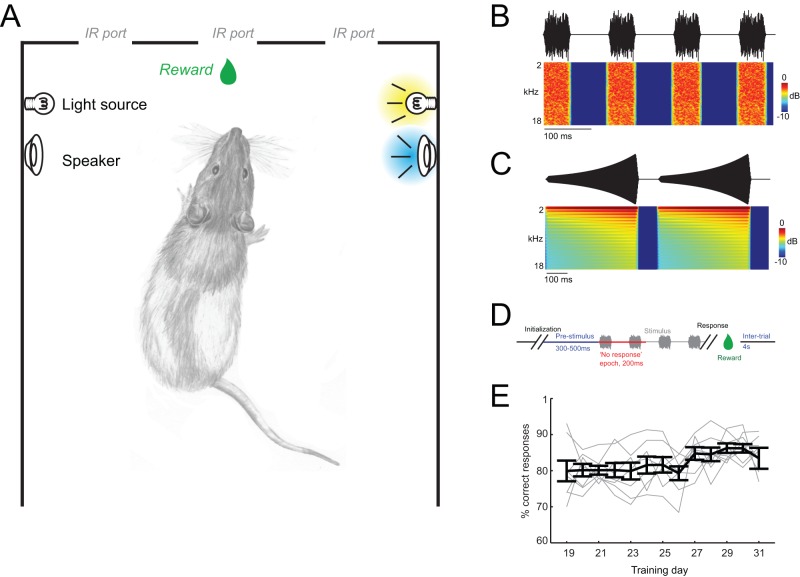Figure 1. Training setup and stimuli.
A) Schematic of the training setup indicating three infra-red sensitive nose-pokes, a tube for reward-delivery and the lateralized visual and acoustic stimuli. Stimuli were presented on either side and in one of three modality conditions (visual only, auditory only, audio-visual). B) Sound wave (upper) and time-frequency representation (lower panel) for the auditory white-noise stimulus. Noise pulses lasted 60 ms with 80 ms inter-pulse intervals. C) Sound wave and time-frequency representation for auditory looming sounds. Individual looming sweeps lasted 500 ms and were separated by 100 ms intervals. D) Schematic of trial timing. Trial initialization by the animal was followed by a pre-stimulus period (300–500 ms) subsequent to which the stimulus appeared on either side. The first 200 ms of stimulus presentation were defined as no-response epoch during which responses were ‘punished’ by time-outs. E) Behavioral performance (% correct responses) for the first days during the final training stage (Step 6). The animals reached stable performance above 80% in few days of training on this step. Days are indicated relative to the total training time (including all steps).

